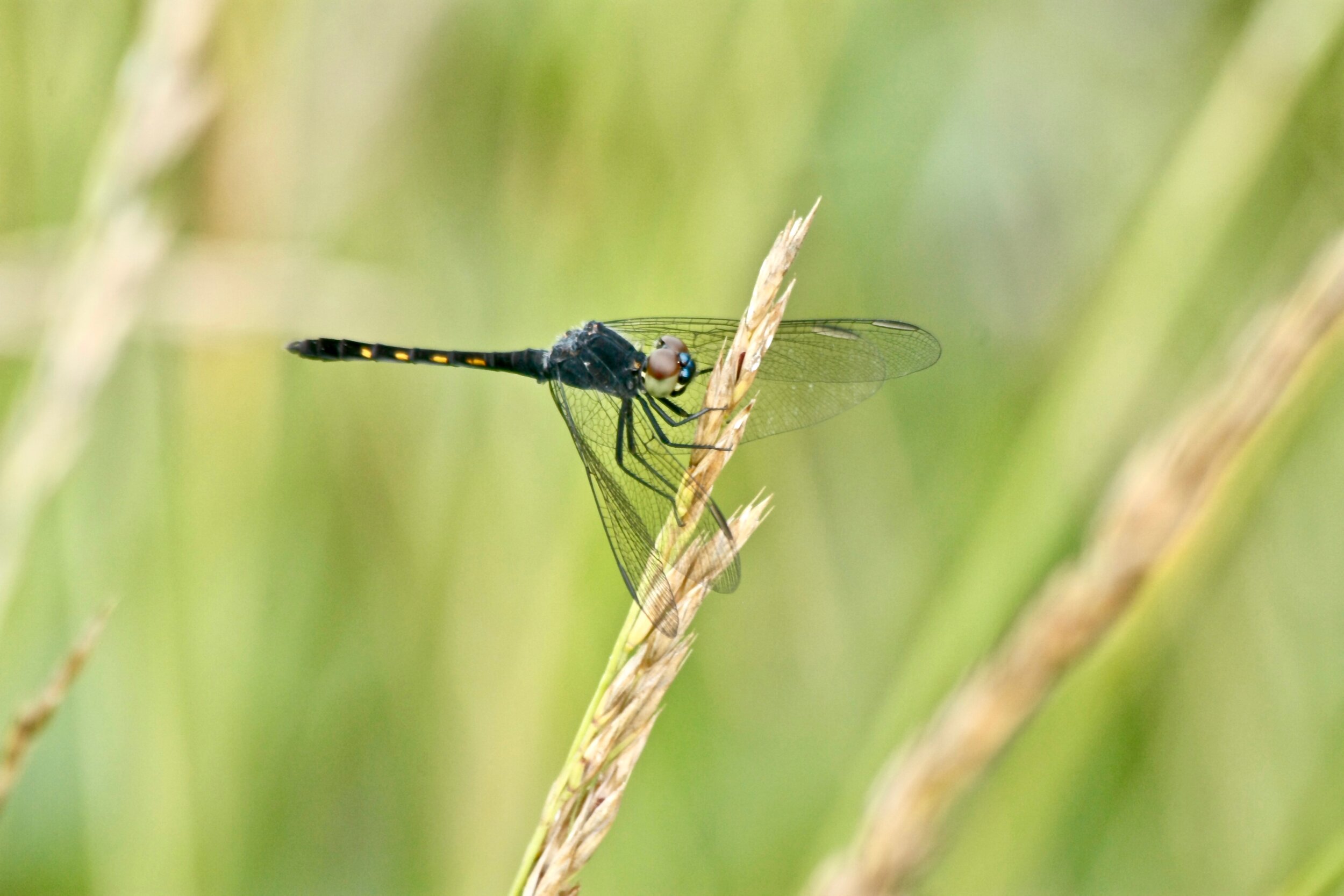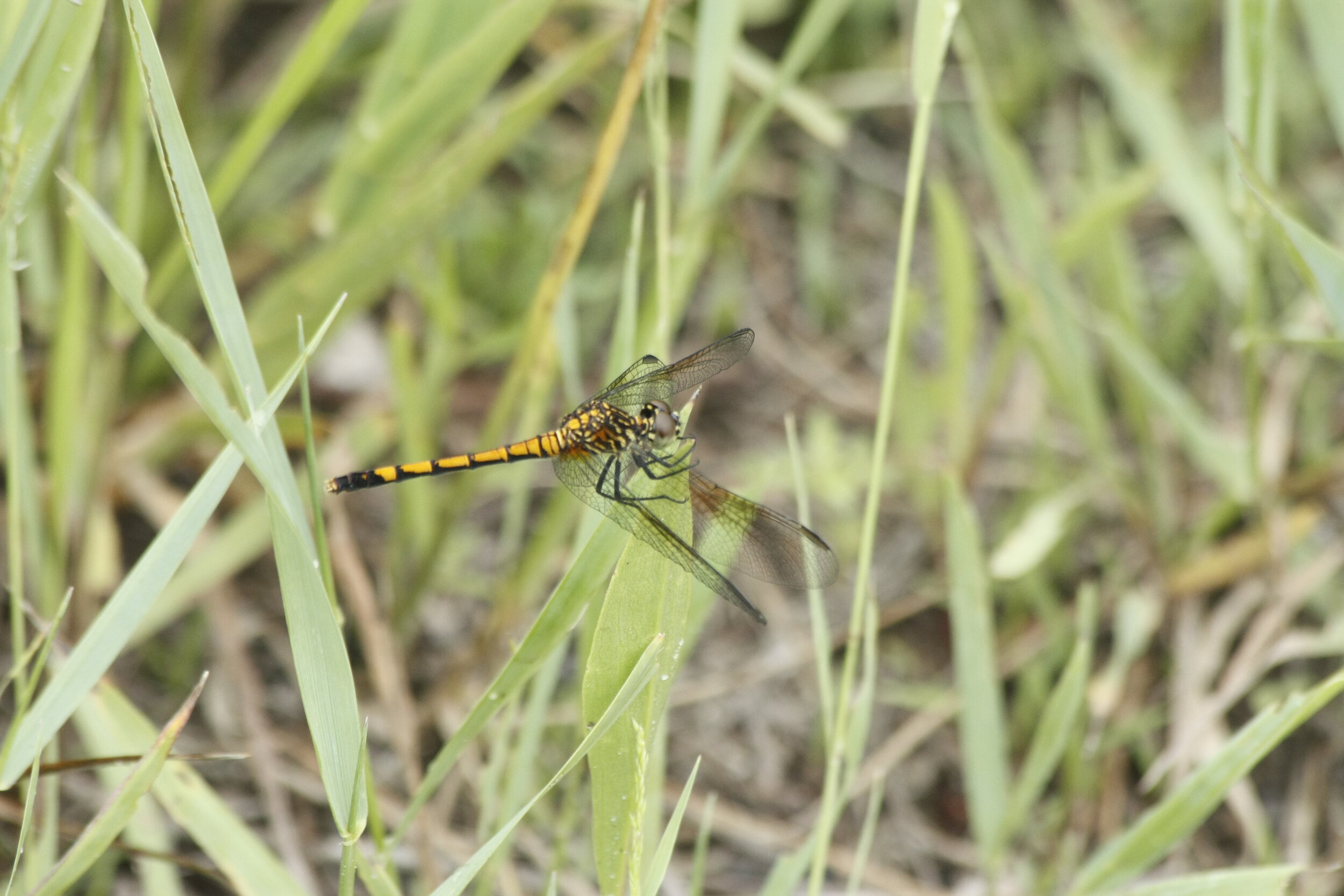Local Wildlife Weekly #2: Seaside Dragonlet
/This is part of the 2020 Digital Seaside Center. For more Digital Seaside Center content, click here.
Hi everyone! Welcome back to Local Wildlife Weekly.
During last week’s profile of purple martins I touched on their predation of dragonflies, and included a rather ghastly anecdote about a mid-air decapitation. As the victims of that story, dragonflies were made out to be a bit helpless: prey for martins and nothing more. Let us not forget that, while dragonflies certainly fall prey to some large insectivorous birds, they are formidable predators in their own right. Not only that, they’re a fascinating group of organisms to observe and study: a remarkable diversity exists here in Connecticut, but only becomes apparent when you take the time to look and learn.
Introducing: The Seaside Dragonlet
A male Seaside Dragonlet at Barn Island WMA in Stonington, CT. Photo by Brendan Murtha.
This week’s profile is on the seaside dragonlet, Erythrodiplax berenice. This species of dragonfly is unique in its habitat choice, and its name points to that specialization: they are a dragonfly tied to the coast! Perhaps “saltmarsh” dragonlet would be a better name, for in their affinity for coastal wetlands they are readily found in Saltmarshes all up and down the eastern seaboard— often they’re the only dragonfly in that habitat. Although small and subtly colored they perch conspicuously on shrubs and marsh grasses, sometimes in great numbers, and they’ll often return to the same perch after buzzing out to take a gnat or mosquito from the air. The species exhibits strong sexual dimorphism, or variation between the sexes. Males are primarily dark, while females are bright and variable with spangled patterns of black and yellow. While other dragonflies may sometimes appear in coastal habitats, hunting insects over dunes and marshes, no other species is as tied to the coast as the dragonlet— they spend their whole life-cycle here, and rarely occur inland.
A female Seaside Dragonlet. Photo by Brendan Murtha.
Dragonflies are odonates, order Odonata, a group that also includes damselflies. Dragonflies are classified under suborder Anisoptera, while damselflies occupy Zygoptera, the only major distinction within the odonate umbrella. Both these groups share a number of conserved characteristics, including an amphibious life cycle. Larval odonates are aquatic, and only take to the air after metamorphosing into their winged adult form. Odonates are thus inherently tied to aquatic habitats, and are most often found in close proximity to water. Certain adults will stray far from water sources, but these species are in the minority and must still return to the water to breed. Odonates lay their eggs underwater in a process known as oviposition. Females will insert the end of their long, slender abdomen just beneath the surface of the water to attach eggs to submerged substrates or within layers of sediment; these eggs then hatch into larvae which feed on animal prey. The vast majority of odonates breed in freshwater habitats such as ponds or slow silty streams, and few species can tolerate even slightly saline conditions. Seaside dragonlet is a notable exception.
Female dragonlets typically deposit eggs within the algal mats of warm, shallow marsh pools. Larval dragonlets then spend their first weeks there, and it is in this habitat that the greatest stressors occur. Odonates’ freshwater requirements arise from larval development, for most young can not survive high concentrations of salt in the water. The reason seems to be larvaes’ hemolymph osmotic pressure, which increases with salinity and will kill them if it gets too high. The larvae of seaside dragonlets, however, regulate their internal homeostasis in a unique manner: they can maintain constant pressure between their internal and external environments even when salinity climbs to extreme heights. Dragonlet larvae succumb to a spike in pressure only in seawater at 300% ambient salinity, a remarkable resilience. They can truly be considered a marine odonate as a result, and are the only dragonfly in the world known to possess this ability.
How did such a unique adaptation occur? It is certain that, without it, seaside dragonlet would not survive in its habitat of choice. In fact it probably wouldn’t exist as a species at all! While the mechanisms and genetic underpinnings of this regulatory ability are unclear, adaptive regulation of hemolymph osmotic pressure is also seen in other species of insect whose larvae live in similar environments. Many species of fly (Diptera) lay eggs in the same pools as dragonlets, and those flies’ larvae exhibit similar pressure control. This indicates that the ability has evolved independently across the two taxa— the flies and the dragonlets each reached this ability on their own, after diverging from ancestors who did not occupy saline habitats and, as they say, could not hang. As a result they were able to colonize an unoccupied niche. Here we see that the selective pressures of the saltmarsh drive distantly related insects to converge on the same adaptation– there are limited ways to eek out a living there! Of course, it is unknown how similar the two organisms regulatory mechanisms are, and so just how convergent this evolution is remains unclear. Across the world, there are many examples of taxa reaching the same functional adaptation through wildly different biological means: this local example illustrates that frontiers in evolutionary biology remain accessible close to home. How cool is that!?
A few days ago I stood amongst a swarm of dragonlets in a marsh in eastern Connecticut (the species requires large tracts of marsh, and is thus quite local on the CT coast) and couldn’t help but marvel— this unassuming little species is unique among all the thousands of dragonfly species known to inhabit our world. I only started looking at odonates a few years ago, long after developing an interest and eye for birds, reptiles, fish, etc. To think of the little wonders I was missing out on all that time! I would never know to marvel, or look closely, at organisms like the seaside dragonlet if I didn’t recognize the unusual characteristics of their ecology, and this comparative aspect comes with experience and education. It remains a great reminder of the doors that nature education can open, and just how transformative it can be. I hope I’ve opened one of those doors for readers today— see what odonates you can find in your neighborhood, and try and learn a little about them, too.
Until next week! Cheers!
Brendan Murtha, 2020 Seaside Center Naturalist
Sources:
Paulson, Dennis. Dragonflies and Damselflies of the East. Princeton, NJ, Princeton University Press. 2011.
Dunson, William A. Adaptations of Nymphs of a Marine Dragonfly, Erythrodiplax berenice, to Wide Variations in Salinity. Physiological and Biochemical Zoology 53(4): 1980.

















